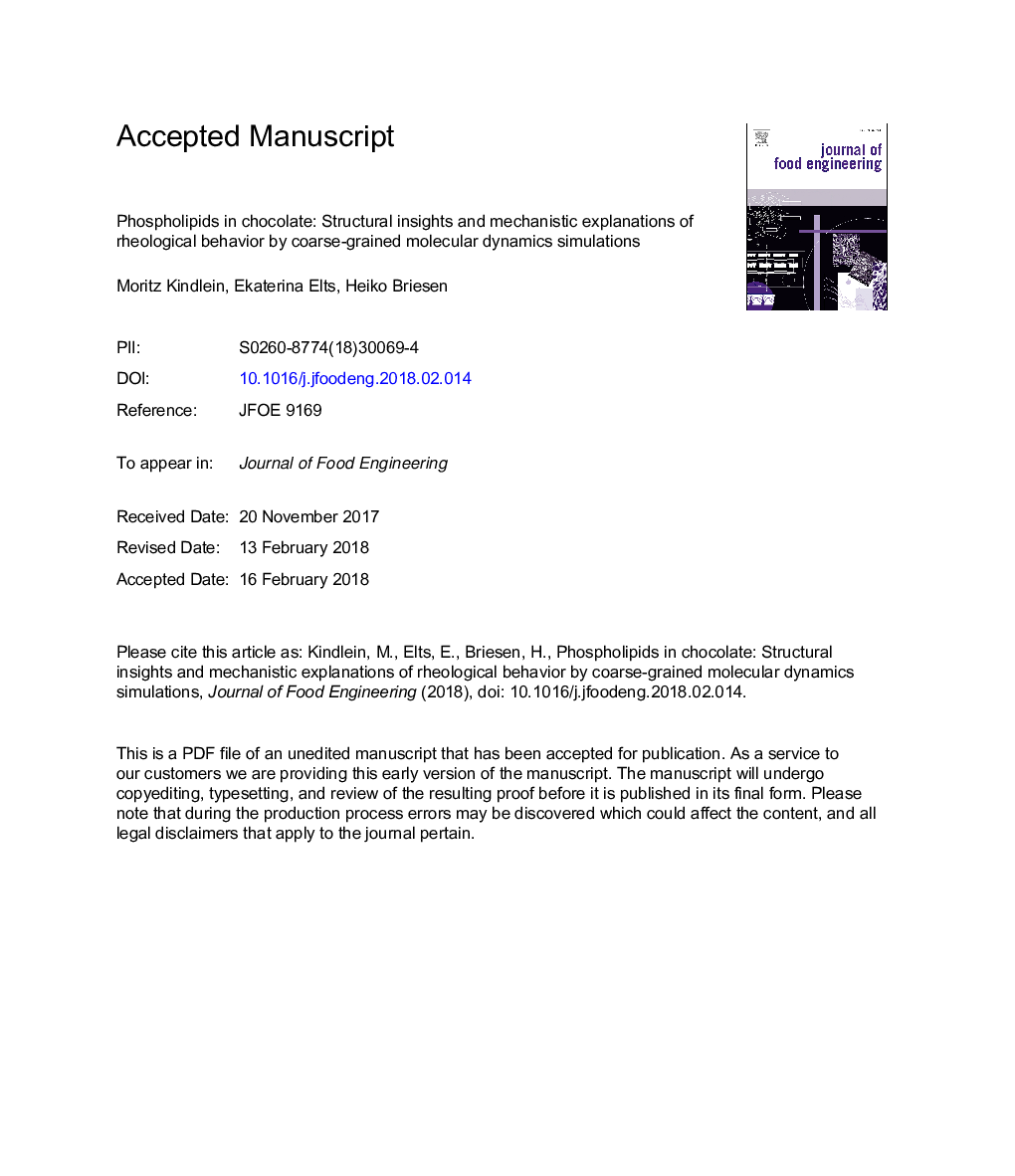| Article ID | Journal | Published Year | Pages | File Type |
|---|---|---|---|---|
| 6664601 | Journal of Food Engineering | 2018 | 28 Pages |
Abstract
The structural properties of phospholipid layers and micelles at sucrose crystal cocoa butter interfaces were investigated by coarse-grained molecular dynamics simulations to understand the molecular mechanisms and structures vital for the chocolate conching process. Influences of the different hydrophilic head groups phosphatidylcholine, phosphatidylethanolamine, phosphatidylinositol, and phosphatidic acid of lecithin phospholipids as well as influences of the degree of saturation of aliphatic chains were investigated. Phospholipid monolayers at sucrose-cocoa butter interfaces were shown to have similar molar composition as soy lecithin, indicating that all phospholipids adsorb with similar probability. Phospholipids with saturated aliphatic chains have smaller areas per lipid in the monolayer on the sucrose cocoa butter interface than unsaturated phospholipids. It was shown that phospholipids that are not adsorbed in the monolayer assemble in spherical, cylindrical, and wormlike micelles in cocoa butter, depending on the phospholipid concentration. Wormlike micelles were shown to be able to build a hydrophilic network in the cocoa butter medium. This is proposed as an explanation for the increasing yield values at higher lecithin concentrations in chocolate manufacturing which have been reported in several studies. The resulting structures of phospholipids on sucrose surfaces were related to experimental measurements from the literature.
Related Topics
Physical Sciences and Engineering
Chemical Engineering
Chemical Engineering (General)
Authors
Moritz Kindlein, Ekaterina Elts, Heiko Briesen,
